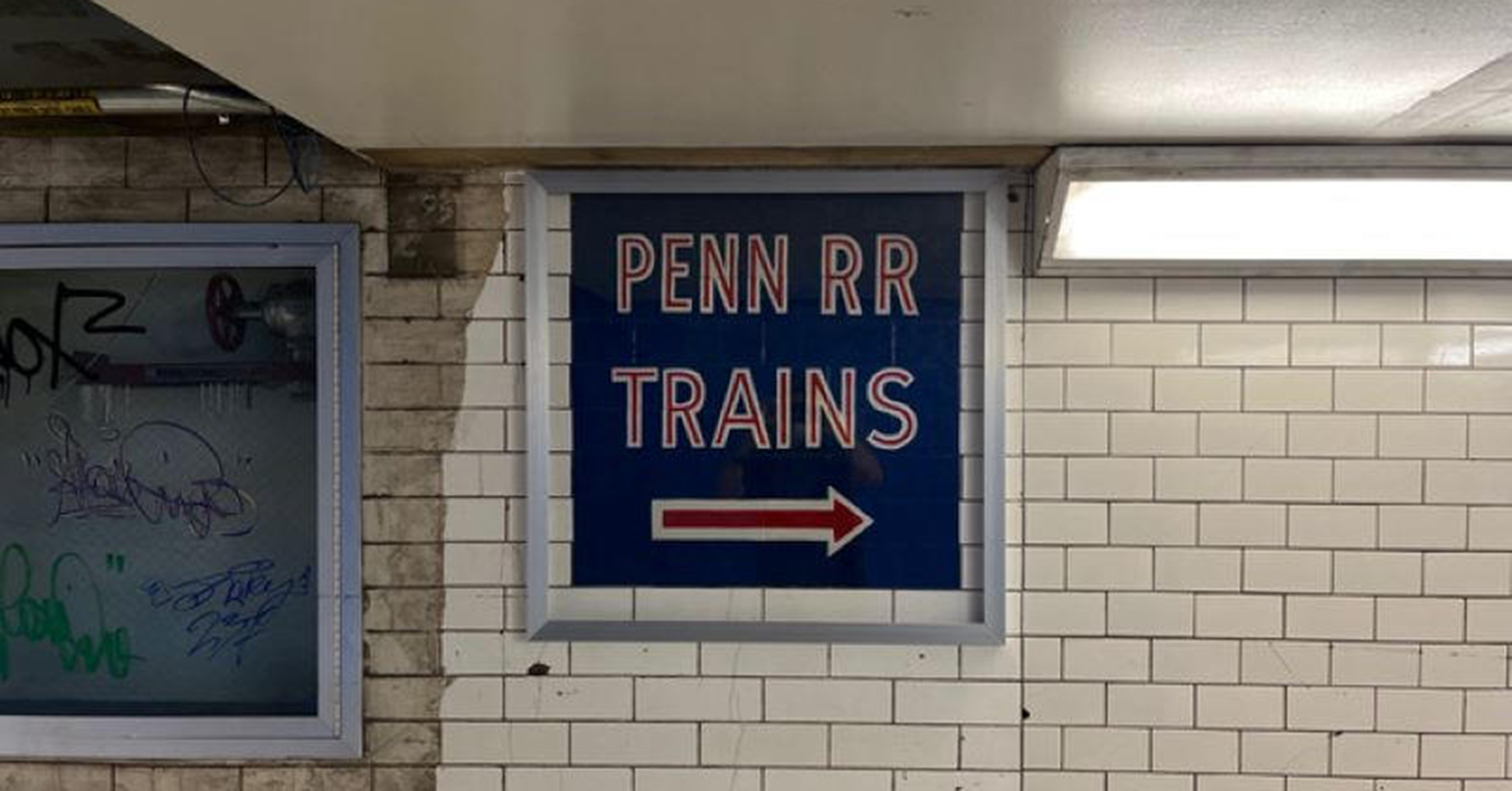Long before the MTA, there was the Interborough Rapid Transit Subway (IRT), whose first line opened almost exactly 117 years ago on October 27, 1904. (The company was founded in 1902 by August Belmont, Jr., who later built the Belmont Park racetrack.) Around that time, elevated train lines were popping up across the city, which contributed to some street congestion, Following two decades of debates surrounding the viability of underground travel, the first line opened between City Hall and 145th Street at Broadway, a route often nicknamed “City Hall to Harlem in 15 minutes.”
Many of the IRT‘s historic signs, photos, and other physical remains have been lost. However, an IRT sign was recently restored in Penn Station, built originally as an express station on the IRT Broadway–Seventh Avenue Line. The sign simply reads “PENN RR TRAINS” in red on a dark blue background with a red arrow. The line was built in conjunction with the Lexington Avenue Line, which made it easier to travel between Broadway and Park Avenue thanks to the 42nd Street Shuttle.
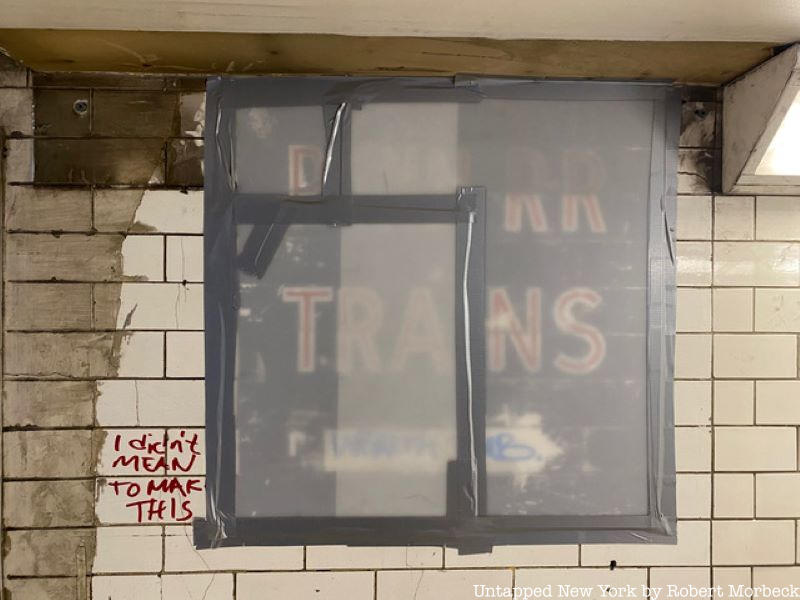
The original Pennsylvania Station was constructed between 1904 and 1910, designed by McKim, Mead, and White. There are few people, though, that contest the tragedy of the demolition of Penn Station, which began on October 28, 1963, after the Pennsylvania Railroad found itself in financial trouble. The air rights to Penn Station were sold to accommodate Madison Square Garden. Some had argued that the cost of keeping the original structure was prohibitive, although others thought it was quite cost-effective and functional. Modern architects of the time had rushed to save the building from destruction, but on that momentous day in October, demolition of the above-ground portion began, and Madison Square Garden and two office towers were later built above the concourses.
Still remaining from the original Penn Station is the cast-iron waiting room partition, brass and wrought iron railings, two of the original 22 eagles, original glass flooring, and the coal-fired power plant (which is also at risk of demolition). But for years, the IRT sign was covered and at risk of destruction.
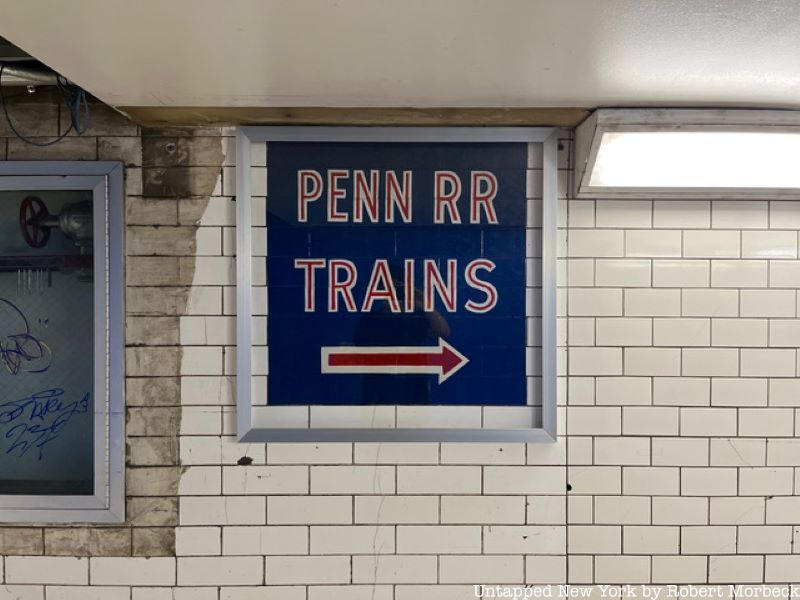
According to our Chief Experience Officer Justin Rivers, who leads tours of the Remnants of Penn Station, the IRT sign was originally an Interborough Rapid Transit Sign, most likely from the 1920s or ’30s. It is the last of the hand-painted signs in Penn Station itself—there is one faded IRT Trains sign at the top of the stairs to the southbound 1 train, but technically that is not in Penn Station.
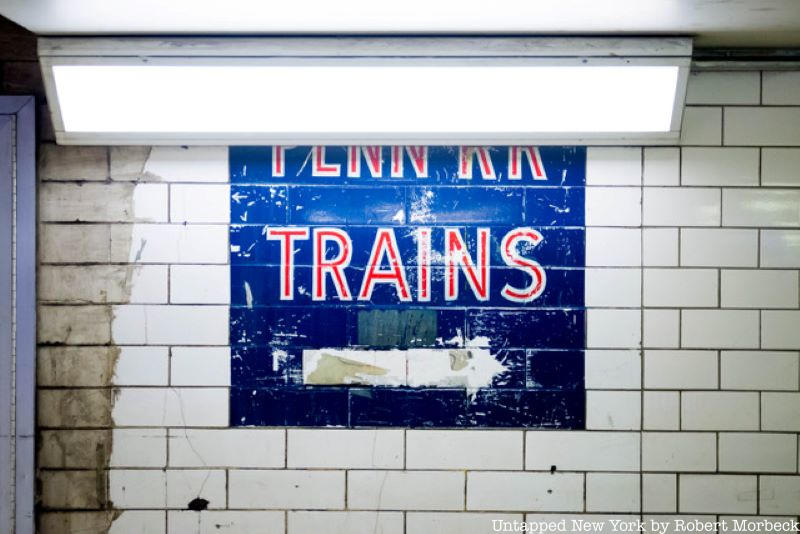
Rivers said that he saw it taped up late this spring with the light casing removed, fearing that they would remove it or replace the wall entirely. When partitions showed up over the summer, he feared that they were replacing the wall and the sign was gone for good. While on a public tour three weeks ago, he discovered that they had done exactly what he had been telling the MTA to do for seven years: Remove the light, and glass the sign over to preserve this piece of history.
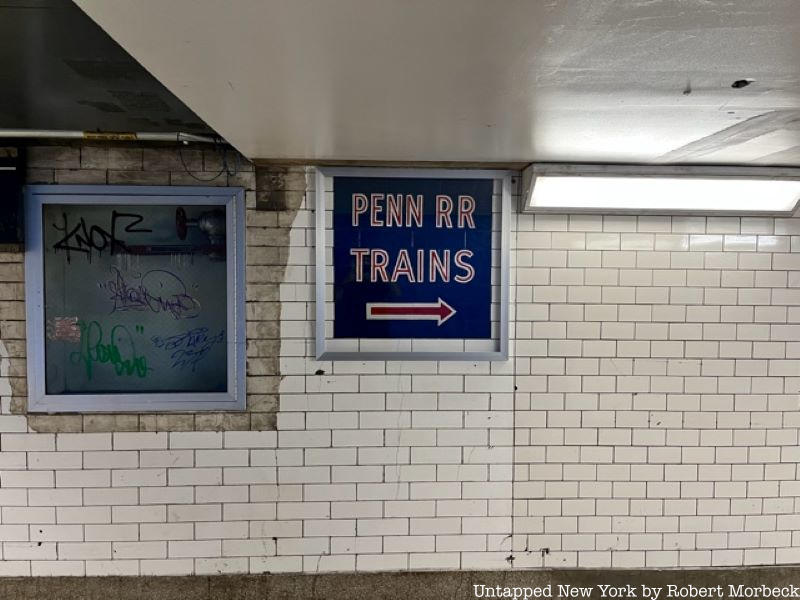
In a comedic and dramatic message to Untapped New York, Untapped New York Insider Robert Morbeck wrote, “A Solitary Man in the Underground Wilderness Effectuates Change! For years one of the last few remaining remnants of the Late Great Pennsylvania Station New York has been obscured by the ill-chosen placement of a fluorescent lighting fixture down in the historic Hilton Corridor. Playwright Justin Rivers, creator of the masterwork production ‘The Eternal Space’ has spent years telling anyone who would listen what needed to be done. The Arc of the Moral Universe Bends Toward Justice! A recent renovation has moved the Ugly Interloper, restored the fading paint, and framed the hand-painted message with a clear protective cover. BRAVO!”
Next, check out 5 Remnants of the Original Penn Station!






